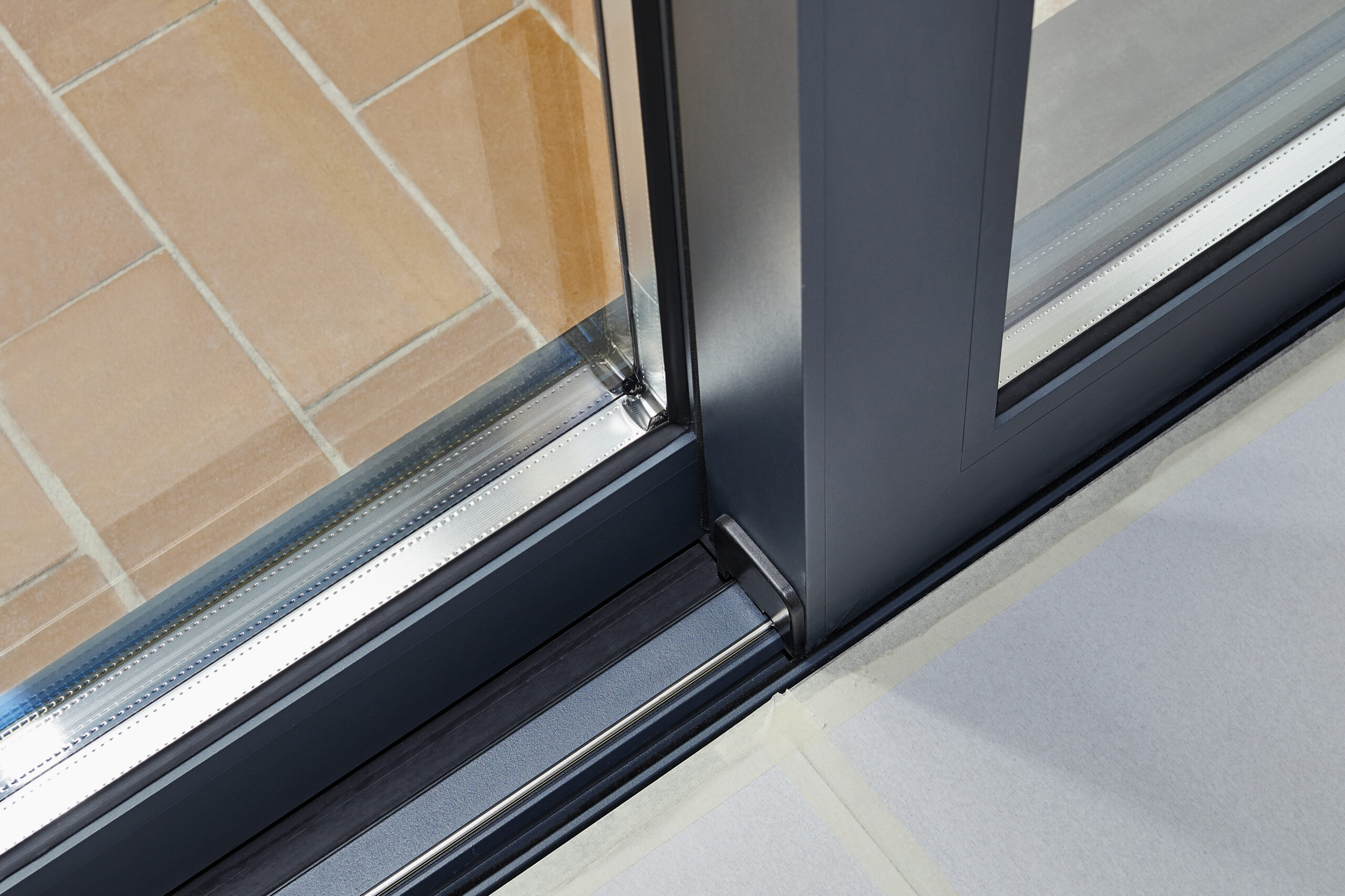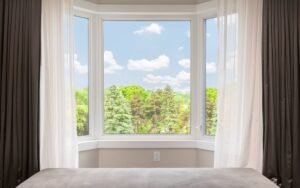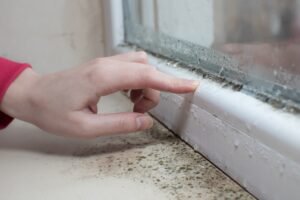

Welcome to The Glassperts’ blog, where we share our expertise in sliding glass door repair and glass solutions. In this article, we’ll delve into a common concern faced by homeowners: condensation issues on sliding glass doors. As temperatures fluctuate and humidity levels change, condensation can pose problems for both the functionality and aesthetics of your doors. Our goal is to help you understand the root causes of condensation, identify signs of trouble, and provide practical solutions to keep your sliding glass doors in top-notch condition.
Understanding Condensation on Sliding Glass Doors
Condensation occurs when warm, moist air comes into contact with cooler surfaces, causing water vapor to transform into visible water droplets. Sliding glass doors are particularly prone to this phenomenon due to their large glass panels and temperature differences between indoor and outdoor environments. Humidity levels play a pivotal role, with higher humidity leading to increased condensation.
When warm indoor air comes into contact with the cooler glass surface of your sliding doors, it loses its ability to hold moisture. This excess moisture is then deposited on the glass surface in the form of water droplets. Understanding the science behind condensation helps homeowners grasp the importance of managing humidity levels and maintaining proper ventilation.
When it comes to the glass itself, tempered or laminated glass is often used for safety reasons. These types of glass are designed to minimize the risk of shattering, providing an extra layer of protection for your home.
Identifying Signs of Condensation Issues
It’s crucial to recognize the signs of condensation issues early on to prevent more severe problems. Foggy glass is a clear indication that condensation is occurring on your sliding glass doors. Additionally, water droplets forming on the surface, especially during temperature changes or humid conditions, are red flags. If left untreated, these signs can lead to more significant issues like mold growth and structural damage.
Another telltale sign is moisture accumulation along the bottom track of the sliding glass door. This can be caused by cold air meeting the warm indoor air, leading to moisture buildup and potentially damaging the door frame. Regularly inspecting your doors for these signs can help you catch and address condensation issues before they escalate.
Potential Consequences of Ignoring Condensation
Ignoring condensation problems can have serious consequences for your sliding glass doors and overall indoor environment. Mold growth is a common result of excess moisture, posing health risks and requiring costly remediation. The combination of moisture and darkness in the corners of the door frame can create a breeding ground for mold and mildew, which can negatively impact air quality and cause respiratory issues.
Moreover, untreated condensation can lead to the deterioration of wooden door frames. As moisture seeps into the wood, it can cause warping, rotting, and even structural instability. The beauty of your sliding glass doors can also be compromised, as constant moisture exposure can lead to unsightly water stains and damage to paint or finishes.
Additionally, energy efficiency can be compromised as the excess moisture makes it harder for heating and cooling systems to maintain a stable indoor temperature. This results in increased energy consumption and higher utility bills. Addressing condensation issues promptly not only preserves the aesthetics of your doors but also safeguards your home’s structural integrity and energy efficiency.
Rollers and tracks are crucial for the smooth operation of sliding doors. Properly selected rollers ensure that your doors glide effortlessly, while well-maintained tracks prevent obstruction. Depending on the weight of your doors, you’ll need to choose rollers that can handle the load without strain.
Steps to Solve Condensation Issues
To address condensation issues effectively, follow these steps:
Assess the Severity: Start by assessing the severity of the condensation issue. Is it limited to occasional fogging, or are water droplets consistently forming?
Check Ventilation: Proper ventilation is crucial for managing indoor humidity levels. Ensure that your home has adequate airflow through windows, doors, and exhaust fans.
Control Indoor Humidity: Invest in a dehumidifier to maintain optimal indoor humidity levels between 30-50%. This reduces the likelihood of condensation forming on your sliding glass doors.
Weatherstripping and Sealing: Apply weatherstripping to seal any gaps around your sliding glass doors. This prevents cold outdoor air from entering and meeting warm indoor air, reducing the potential for condensation.
Upgrade to Insulated Glass: Consider upgrading to insulated glass units (IGUs) if your doors are not already equipped with them. IGUs consist of multiple glass panes separated by a spacer filled with air or gas. This design helps maintain consistent temperatures on both sides of the glass, minimizing condensation.
Professional Assistance: For complex cases or situations where DIY solutions are insufficient, seek professional assistance from The Glassperts. Our experts can assess your specific situation and recommend the most appropriate solutions for your sliding glass doors.
Preventive Measures and Maintenance Tips
Prevent future condensation issues with these practical tips:
- Humidity Control: Invest in a hygrometer to monitor indoor humidity levels. Keep them between 30-50% to reduce the likelihood of condensation.
- Proper Ventilation: Ensure that rooms are adequately ventilated. Open windows and doors when weather permits, and use exhaust fans in bathrooms and kitchens.
- Regular Cleaning: Clean your glass surfaces regularly using a mixture of water and mild detergent. Remove dirt, debris, and potential sources of condensation.
- Inspect Weatherstripping: Regularly inspect weatherstripping and seals around your sliding glass doors. Replace any worn-out or damaged parts promptly to maintain an airtight seal.
- Routine Maintenance: Schedule routine maintenance with The Glassperts to ensure the longevity and performance of your sliding glass doors. Professional maintenance can catch and address potential condensation issues early.
Conclusion
By understanding the causes of condensation, identifying early signs, and taking proactive measures, you can maintain the beauty and functionality of your sliding glass doors. At The Glassperts, we’re dedicated to helping you address condensation issues and other glass-related concerns. Don’t hesitate to reach out to our experts for personalized solutions that ensure your sliding glass doors remain in pristine condition for years to come.
Table of Contents
Contact Us
Contact Form
"*" indicates required fields
Our Services
Schedule Your Emergency Glass Door Repair Service Today!
Latest Blogs


Top Trends in Window Replacement in Miami, FL

When to Consider Residential Window Repair

The Importance of Timely Commercial Glass Repair
See why we at The Glassperts are the top-rated Glass Door Repair and Installation Company in Florida!
Frequently Asked Questions
Can condensation on sliding glass doors cause damage?
Yes, condensation can lead to mold growth, wood rot, and even compromise the energy efficiency of your home.
How do I differentiate between condensation and a broken seal?
Condensation occurs on the interior side of the glass, while a broken seal leads to fogging between the glass panes. If you’re unsure, consult our experts.
Can I use a hairdryer to remove condensation?
While a hairdryer might provide temporary relief, it won’t address the underlying issue. It’s best to address humidity and ventilation concerns.
How can I reduce indoor humidity?
Use exhaust fans, ensure proper ventilation, and consider using a dehumidifier to maintain optimal indoor humidity levels.
Are there preventive measures to avoid condensation?
Yes, maintaining consistent indoor humidity, ensuring proper ventilation, and using insulated glass can help prevent condensation.

